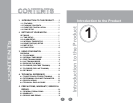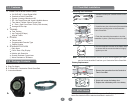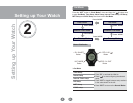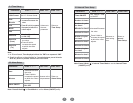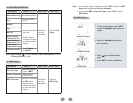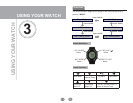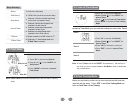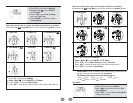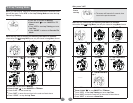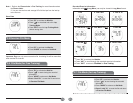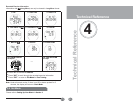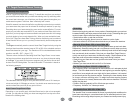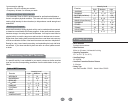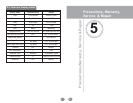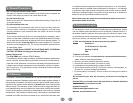
2423
e
n
o
Z
t
e
g
ra
Tr
u
o
Y
g
ni
n
im
ret
e
D
g
n
i
n
i
a
r
Ts
s
e
nt
i
F
&
e
n
o
Zt
egr
a
T
1
.
4
What is Target Zone Heart Rate Training? To benefit the most from your workout,
you should become familiar with your heart rate training zone. By exercising within
the correct heart rate range, you will achieve your fitness goals and strengthen your
cardiovascular system in less time. Here is basically how it works.
Scientific research has shown that effective conditioning requires that you maintain
your heart rate at the proper level for at least 20 minutes per workout (or per day).
Exercising above your heart rate training zone can be counter-effective. For most
people, as your heart rate exceeds 85% of your maximum Heart Rate, which is the
upper limit, your body begins to become anaerobic and produces acids. At this stage,
your body begins to burn muscle instead of fat. When you have reached the lower
limit of you Target Zone Heart Rate Training, effective conditioning can be achieved.
A heart monitor will tune you in to your body’s internal activity level and helps prevent
injury.
The Ergo automatically sets the correct Heart Rate Target Limits by using the
American Heart Association standard range of 65% to 85% of the calculated maximum
Heart Rate based on your age. The maximum HR is calculated based on the
equation, max HR = [207 – (Age x 0.7)].
There are various formulas for calculating Heart Rate Target Zones. In most cases,
the formulas provide a range that is the same as or very close to the auto-setting
of
the Ergo. If you prefer to fine-tune or program your own limits,
this can also
be done in the HR Setting Mode. The internal automatic TZ calculation
is based on
the following example:
The calculated exercise range for a 30-year-old would be a low of 121 beats per
minute and a high of 158 beats per minute. You should never exercise near your
maximum heart rate (max HR) for any period of time.
Depending on your specific goals, individual fitness level or just on how energetic
you feel, you may want to modify your heart rate range from one day to the next
based on the following chart:
Basic Fitness Target Zone & Tips
g
ni
hct
er
tS
Stretch at the beginning and end of every workout. Stretching before your workout
increases flexibility and helps prevent muscle strain or injury. Stretching after your
workout loosens tight muscles and helps prevent soreness.
• Stretch before warm up and after cool down.
• Stretch slowly and gently. Never bounce or stretch to a point of pain.
• Hold each stretch for 30-60 seconds and exhale as you extend into stretches.
Warm Up & Cool Down: 55% or Less of Max. HR
Begin and end every workout with a slow and gradual warm up and cool down.
Respectively, Smoothly easing into and out of strenuous activity helps your body
prepare your metabolism and blood flow to efficiently break down fat and change
from one intensity level to another. Going into your Heart Rate Target Zone too
quickly can cause your heart rate to increase too rapidly. Rapid increase of the
heart rate could compromise consistent energy levels during a workout.
• Slowly bring your heart rate to a level just below the lower limit of your Heart
Rate Target Zone.
• Maintain your heart rate at this level for 5 to 10 minutes.
The Fat Burning Zone: 55%-65% of Max.HR
The Fat Burning Zone is recommended for those who are not in adequate physical
shape. This is the ideal zone for those who are beginning to exercise regularly,
would like to loose weight and are at high risk for heart problems. It is intended
for low intensity and/or long duration exercise. Exercising at a lower intensity allows
for a longer, continuous exercising period. For weight loss and new exercise programs,
l
onger, continuous, low intensity workouts are safer and more beneficial. Slow and
steady wins the race!
• Duration: Build up gradually to 30 to 60 minutes per workout.
• Frequency: Workout 3 or 4 times per week.
The Aerobic Zone: 65%-85% of Max. HR
The Aerobic Zone is recommended for those in good physical condition who
have been exercising on a consistent basis for an extended period of time.
Exercising at this range helps improve your fitness level and prevent injury



